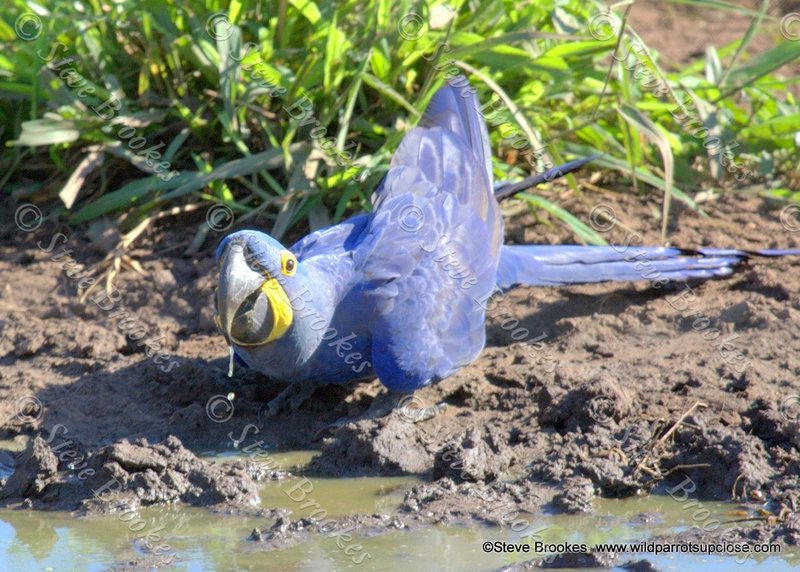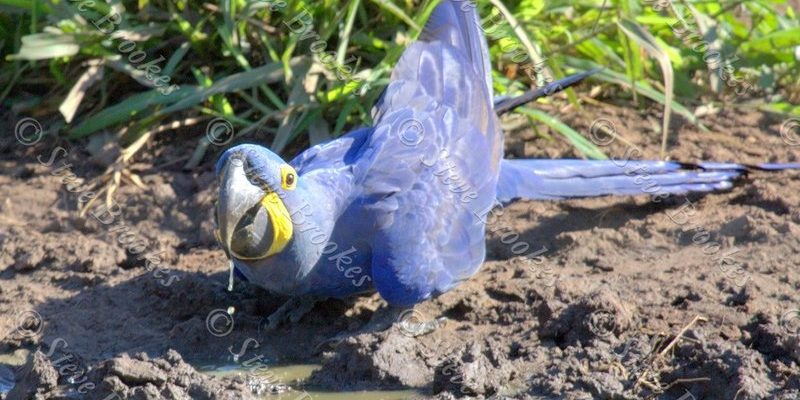
Nesting for these marvelous creatures isn’t just about finding a cozy spot; it’s an intricate process that connects them to nature and their future generations. Imagine crafting a safe haven for your family; that’s precisely what these birds do when they choose a nesting site. So, grab your favorite drink, and let’s dive into the fascinating world of the Hyacinth Macaw’s nesting habits and lifecycle!
What Makes Hyacinth Macaws Unique?
First off, let’s chat about what sets the Hyacinth Macaw apart from other parrots. They’re not just the largest in the macaw family; their striking cobalt-blue plumage and bright yellow accents make them a spectacle to behold. But there’s more than just looks; these birds have a strong bond with their partners, which plays a vital role in their nesting habits.
Hyacinth Macaws are known for their intelligence and social nature. They thrive in pairs or small family groups. This strong social structure is essential during the breeding season when pairs work together to create a safe environment for raising their young. Honestly, it’s quite heartwarming to see how involved both parents are in caring for their chicks, showcasing teamwork that’s pretty inspiring.
Nesting Sites: Where Do They Live?
So, where do Hyacinth Macaws like to nest? These birds are choosy about their nesting spots, often opting for tree cavities in large, tall trees. They prefer native species like the Brazil Nut tree or the Mature Woodlands, which provide the perfect height and shelter. The right nesting site is crucial; it not only protects them from predators but also offers a comfortable place for their chicks.
Here’s the thing: the nesting sites can sometimes be limited due to deforestation and habitat loss. This decline in suitable nesting areas makes it even more critical for conservation efforts to focus on protecting these majestic birds and their environments. Without their preferred nesting spots, their chances of survival and reproduction decrease significantly.
The Nesting Process: Creating a Home
Creating a nest isn’t a quick task; it’s a labor of love. The Hyacinth Macaw doesn’t just pick any hole in a tree. They take time to choose a nesting cavity that’s safe and suitable. Once they’ve selected the perfect spot, they start lining it with softer materials like feathers, leaves, and even bits of bark. This cozy touch not only helps keep the chicks comfortable but also retains warmth.
During the nesting phase, the female plays a significant role. She’s usually the one that lays the eggs, typically producing two or three per breeding season. These eggs are laid about two days apart, which can help ensure that at least some of the chicks survive if food becomes scarce. It’s like a backup plan built into nature!
Incubation: The Waiting Game
Once the eggs are laid, the real waiting game begins. The female incubates the eggs, usually for about 28-30 days. During this time, the male is busy foraging for food to keep both parents energized. It’s pretty fascinating how they work together; one parent stays close to the nest for protection and warmth, while the other hunts for food.
This incubation period is crucial. If the eggs stay too cold or too hot, there’s a risk that they won’t hatch. So, patience is key! You might picture the female as the ultimate mother figure, carefully keeping the eggs warm while her partner ensures they have enough food to sustain themselves.
Chick Development: From Hatchling to Independence
When the chicks finally hatch, it’s like a small miracle. They’re initially quite vulnerable, relying entirely on their parents for food and warmth. The chicks are born with a light gray down covering them and are incredibly helpless, making the parent’s role even more critical.
For the first few weeks, the parents feed their chicks regurgitated food, a vital source of nutrients. As the chicks grow, they start developing their feathers and begin looking more like their beautiful parents. The journey from being a tiny hatchling to a fledgling ready to take on the world typically takes about 3 to 4 months. During this time, the parents continue to nurture and protect the young, teaching them crucial survival skills.
Fledging and Finding Their Own Way
After several months of care and protection, the young Hyacinth Macaws will start to leave the nest. Fledging is an exciting but tense time. The young birds must learn to fly, forage for food, and navigate their new world. Their parents often stay close by, guiding them through this new phase of their life.
Interestingly, young Hyacinth Macaws may stay with their parents for several months after fledging, learning the ropes of their habitat. This extended care helps them develop the skills they’ll need for survival when they’re finally on their own. It’s like going to a family-run restaurant; you get to learn from the best before heading out to create your own menu!
The Importance of Conservation
Conservation efforts for the Hyacinth Macaw are crucial in ensuring this stunning species doesn’t disappear from our skies. Habitat destruction, hunting, and the illegal pet trade have put these magnificent birds at risk. Organizations around the world are stepping in to help protect their nesting habitats and educate communities on the importance of these birds.
You might be wondering, “What can I do to help?” Supporting wildlife conservation efforts, spreading awareness, and even visiting sanctuaries can make a big difference. Every little bit helps in protecting these beautiful creatures and ensuring that future generations can also marvel at their beauty.
In conclusion, the nesting habits and lifecycle of the Hyacinth Macaw are as vibrant and intricate as the birds themselves. From the carefully selected nesting sites to the nurturing of their young, these parrots showcase a beautiful example of family and resilience in nature. By learning more about them, we can better appreciate their role in our ecosystem and the importance of protecting their future. So, let’s keep the conversation going and work together to safeguard their wonderful world!

